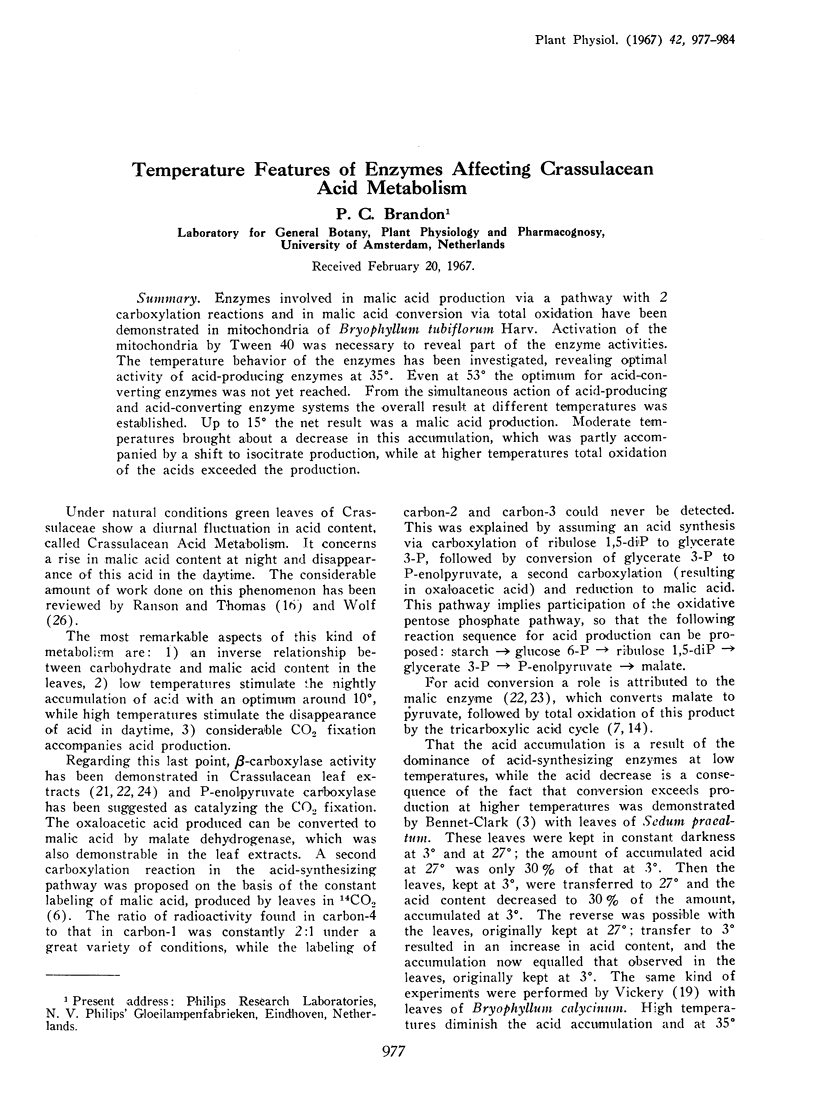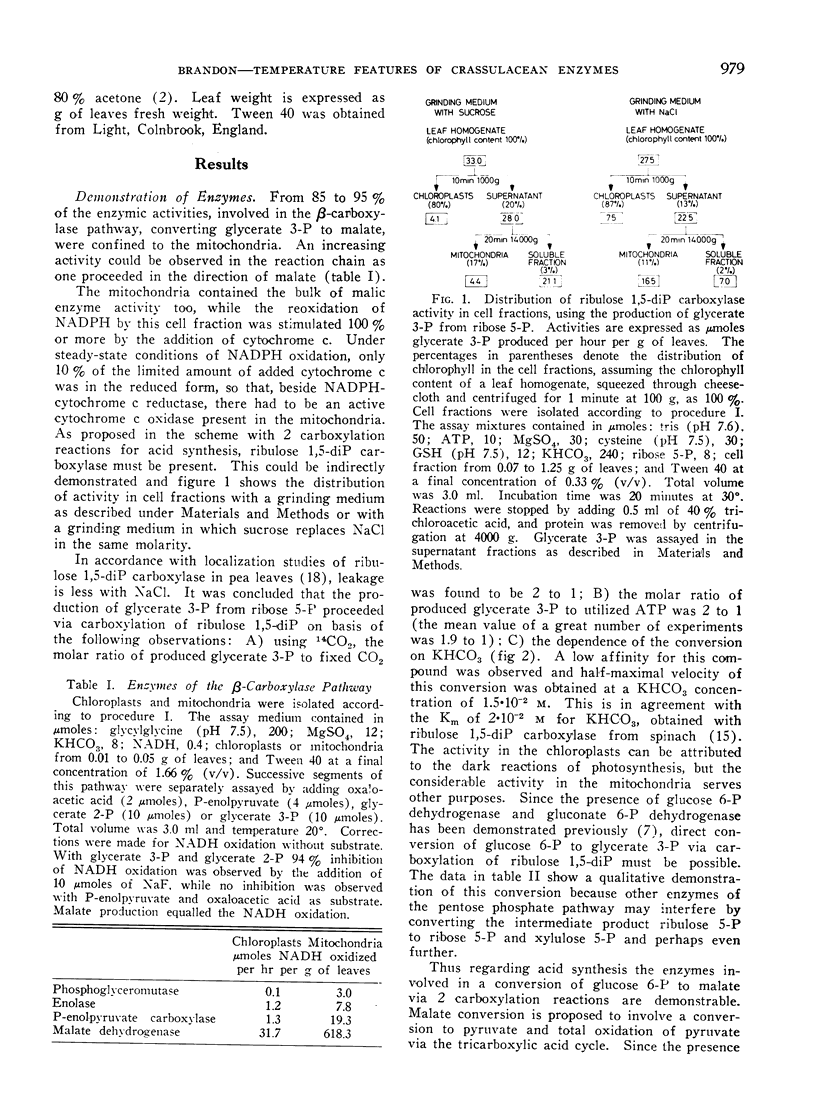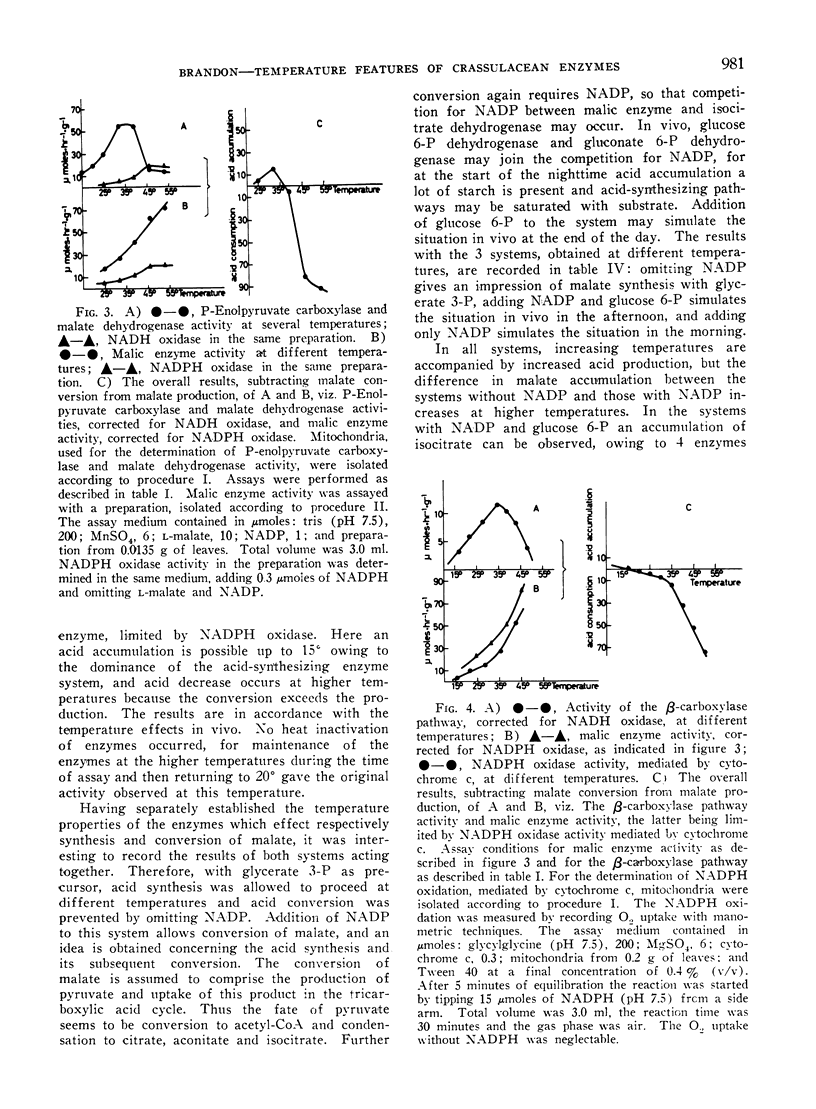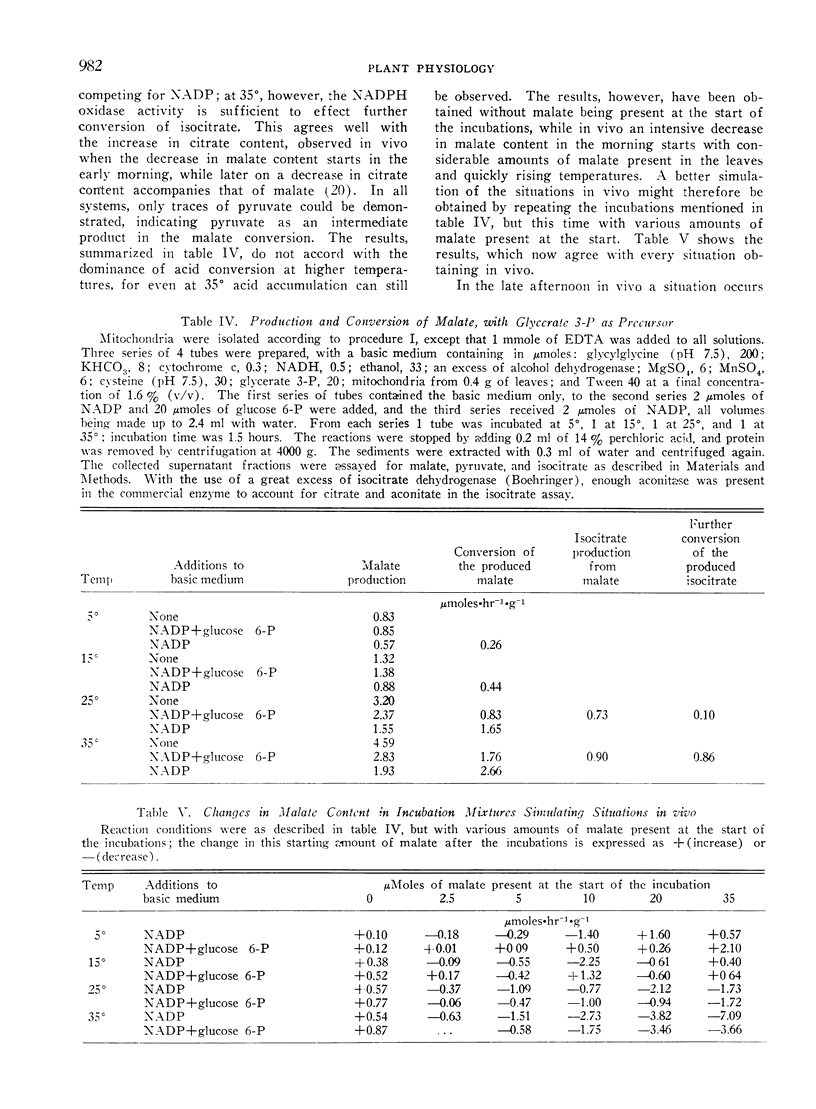Abstract
Enzymes involved in malic acid production via a pathway with 2 carboxylation reactions and in malic acid conversion via total oxidation have been demonstrated in mitochondria of Bryophyllum tubiflorum Harv. Activation of the mitochondria by Tween 40 was necessary to reveal part of the enzyme activities. The temperature behavior of the enzymes has been investigated, revealing optimal activity of acid-producing enzymes at 35°. Even at 53° the optimum for acid-converting enzymes was not yet reached. From the simultaneous action of acid-producing and acid-converting enzyme systems the overall result at different temperatures was established. Up to 15° the net result was a malic acid production. Moderate temperatures brought about a decrease in this accumulation, which was partly accompanied by a shift to isocitrate production, while at higher temperatures total oxidation of the acids exceeded the production.
Full text
PDF







Selected References
These references are in PubMed. This may not be the complete list of references from this article.
- Arnon D. I. COPPER ENZYMES IN ISOLATED CHLOROPLASTS. POLYPHENOLOXIDASE IN BETA VULGARIS. Plant Physiol. 1949 Jan;24(1):1–15. doi: 10.1104/pp.24.1.1. [DOI] [PMC free article] [PubMed] [Google Scholar]
- Bradbeer J. W., Ranson S. L., Stiller M. Malate Synthesis in Crassulacean Leaves. I. The Distribution of C in Malate of Leaves Exposed to CO(2) in the Dark. Plant Physiol. 1958 Jan;33(1):66–70. doi: 10.1104/pp.33.1.66. [DOI] [PMC free article] [PubMed] [Google Scholar]
- GAMBLE J. L., Jr ACCUMULATION OF CITRATE AND MALATE BY MITOCHONDRIA. J Biol Chem. 1965 Jun;240:2668–2672. [PubMed] [Google Scholar]
- HEBER U., WILLENBRINK J. SITES OF SYNTHESIS AND TRANSPORT OF PHOTOSYNTHETIC PRODUCTS WITHIN THE LEAF CELL. Biochim Biophys Acta. 1964 Feb 10;82:313–324. doi: 10.1016/0304-4165(64)90302-2. [DOI] [PubMed] [Google Scholar]
- Lips S. H., Beevers H. Compartmentation of organic acids in corn roots I. Differential labeling of 2 malate pools. Plant Physiol. 1966 Apr;41(4):709–712. doi: 10.1104/pp.41.4.709. [DOI] [PMC free article] [PubMed] [Google Scholar]
- Smillie R. M., Fuller R. C. Ribulose 1,5-Diphosphate Carboxylase Activity in Relation to Photosynthesis by Intact Leaves And Isolated Chloroplasts. Plant Physiol. 1959 Nov;34(6):651–656. doi: 10.1104/pp.34.6.651. [DOI] [PMC free article] [PubMed] [Google Scholar]
- Vickery H. B. Effect of Light upon the Behaviour of Citric Acid in Leaves of Bryophyllum Calycinum Salisb. Plant Physiol. 1959 Jul;34(4):418–427. doi: 10.1104/pp.34.4.418. [DOI] [PMC free article] [PubMed] [Google Scholar]
- Vickery H. B. The Effect of Temperature on the Behavior of Malic Acid and Starch in Leaves of Bryophyllum calycinum Cultured in Darkness. Plant Physiol. 1954 Jul;29(4):385–392. doi: 10.1104/pp.29.4.385. [DOI] [PMC free article] [PubMed] [Google Scholar]
- WALKER D. A., BROWN J. M. Physiological studies on acid metabolism. 5. Effects of carbon dioxide concentration on phosphoenolpyruvic carboxylase activity. Biochem J. 1957 Sep;67(1):79–83. doi: 10.1042/bj0670079. [DOI] [PMC free article] [PubMed] [Google Scholar]
- WALKER D. A. Physiological studies on acid metabolism. 4. Phosphoenolpyruvic carboxylase activity in extracts of Crassulacean plants. Biochem J. 1957 Sep;67(1):73–79. doi: 10.1042/bj0670073. [DOI] [PMC free article] [PubMed] [Google Scholar]
- WALKER D. A. Physiological studies on acid metabolism. 7. Malic enzyme from Kalanchoe crenata: effects of carbon dioxide concentration. Biochem J. 1960 Feb;74:216–223. doi: 10.1042/bj0740216. [DOI] [PMC free article] [PubMed] [Google Scholar]
- WALKER D. A. Pyruvate carboxylation and plant metabolism. Biol Rev Camb Philos Soc. 1962 May;37:215–256. doi: 10.1111/j.1469-185x.1962.tb01611.x. [DOI] [PubMed] [Google Scholar]


